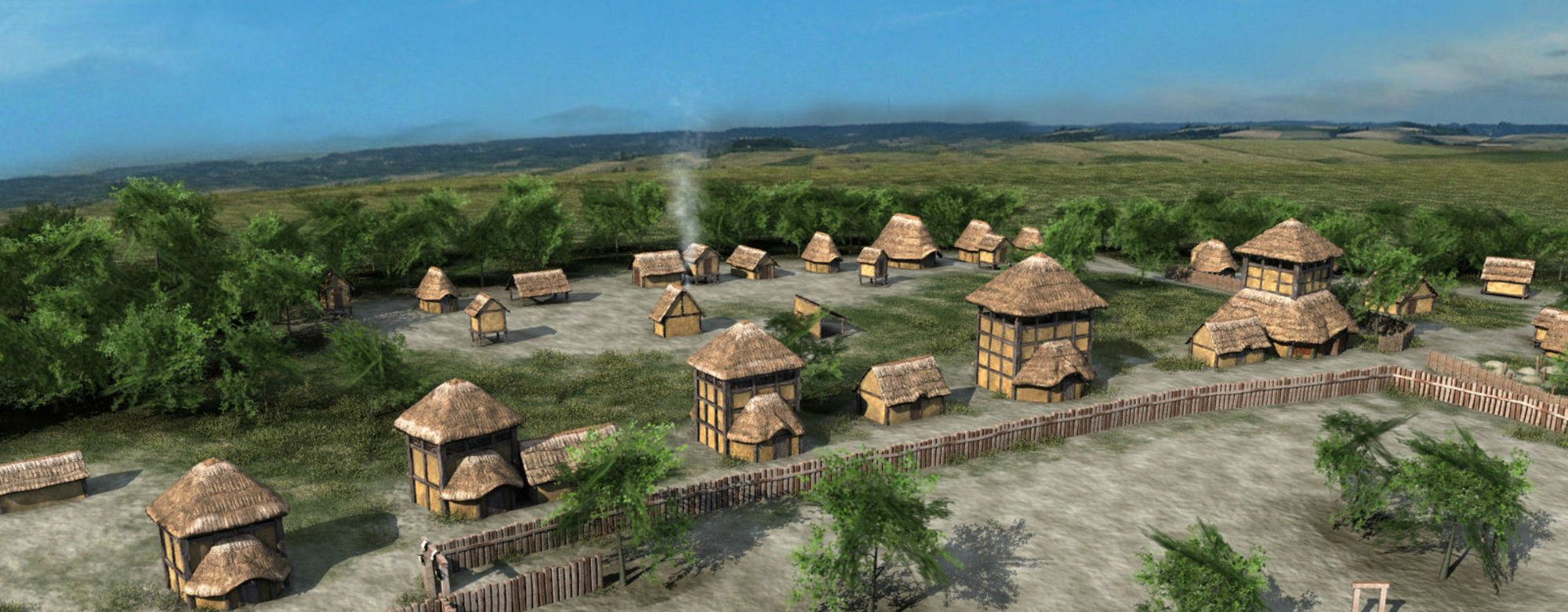
- Home
- The Gallic village
- The birth of the village
- A summertime settlement
While it is impossible to know the precise year that this village was established, there is archaeological data to show the season in which the population arrived. The pottery, an essential source of information on household living across the vast Celtic world, indicates that these people came from nearby and were probably Remi. The first graves date from a few decades after the village was established, so these migrants must have been young when they arrived.
Wagons pulled by oxen, laden with the goods needed for the settlement, were accompanied by sheep, horses, pigs and poultry, the basis for future herds and for stocking the farmyard. The skull of a bull, the first breeding stock to be brought to the site, and which had been on display, was discovered in one of the oldest grain stores.
Several large grain pits were dug out to store the community's grain reserves. The first few sowings only required a superficial preparation of the soil with a scratch plough once the brush had been cleared by fire. Study of the carbonised grain found in a number of stores has shown that sowing was carried out in the autumn, in common with the whole of Northern Gaul. The first harvest would have been ready the following summer. The livestock would have produced the first offspring in late winter and in the spring.






